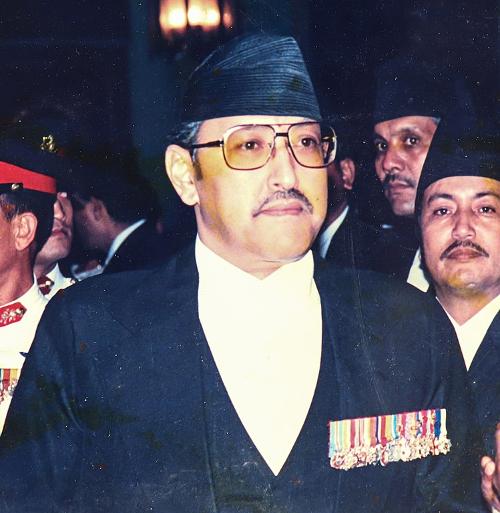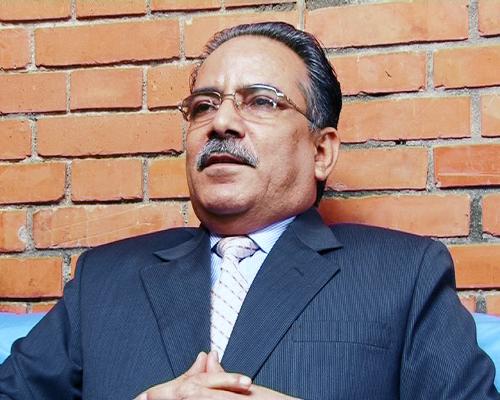NEPAL
History

History
Cities in NEPAL
| Kathmandu |
History
Oldest History
 Birth of Buddha in the forest of Lumbine, NepalPhoto: Myself CC 3.0 Unported no changes made
Birth of Buddha in the forest of Lumbine, NepalPhoto: Myself CC 3.0 Unported no changes made
The Gupta and Ahir are Nepal's oldest dynasties. Nepal is experiencing a prosperous time under the Kirats (from 700 BC). Prince Siddharta was born in Lumbine around 500 BC. He was the later Buddha. Around 250 BC. Prince Ashoka ruled. Various Licchavi royal houses of Indian origin ruled from circa 450 AD. A thriving civilization arose in Nepal
Malla Dynasties
 Prithvi Narayan Shah, NepalPhoto: Public domain
Prithvi Narayan Shah, NepalPhoto: Public domain
The Malla Dynasties ruled between about 1200 and 1768. During this period, trade and prosperity increased and many temples and palaces were built. Towards the end of the reign of the Malla monarchs, the country fell apart. Nepal was divided into many small states at that time.
Prithivi Narayan Shah came to power in 1768 and managed to restore unity. Nepal was at war with England from 1814 to 1816. After the peace was signed, a British resident was allowed to stay in Kathmandu. A number of families continued to fight for supremacy, the royal family was only assigned a decorative function.
Ranas, Gurkha soldiers and the panchayat system
 King Tribhuvan of NepalPhoto: Public domain
King Tribhuvan of NepalPhoto: Public domain
The Rana family wielded power between 1849 and 1951. The Ranas built huge palaces and divided the land among relatives and friends. Education was not for the people but only for the elite. The Ranas supported British rule. They provided the famous Gurkha soldiers.
In 1951 King Tribhuvan took power. He did this with the help of India and by threatening civil war. He introduced a political party system. However, this system proved impractical, so the next ruler (King Mahendra) introduced the panchayat system. This system was derived from the traditional Nepalese village council. It was based on decentralization of power and no political parties were allowed. In this way the king retained an important position of power.
King Birendavan of Nepal has been in power since 1972. He too used the panchayat system. However, there was more and more protest against this. In April 1990 the ban on political parties was lifted. A new constitution came into effect in November 1990. This ended the absolute power of the king.
Democracy and Civil War
 King Birenda of NepalPhoto: Nabin K Sapkota CC 4.0 International no changes made
King Birenda of NepalPhoto: Nabin K Sapkota CC 4.0 International no changes made
After elections in May 1991, the first democratically elected parliament was formed. Girija Prasad Koirala, member of the Nepal Congress Party, became head of government. The November 1994 elections were won by the communist UCPN. A minority government was formed, of which Man Mohan Adhikari became prime minister. Various reforms were carried out, corruption was greatly reduced. In June 1995 this government resigned because the opposition wanted to table a motion of no confidence. The Supreme Court also declared the results of the elections invalid. A center-right coalition government was formed. This government implemented privatization of water, roads and communications, as well as tax relief. In addition, the land reforms were reversed. In recent years there have been no less than six different governments of different backgrounds. The situation can best be described as chaotic.
In June 2001, King Birenda, his wife and several family members were murdered. According to eyewitnesses, the king's son, Dipendra, knowingly shot his parents and six other relatives and then committed suicide. The king's brother, Gyanendra, was crowned king. This to the anger of the people, who saw him as the brain behind the carnage.
 Gyanendra last king of NepalPhoto: Krish Dulai CC 3.0 Unported no changes made
Gyanendra last king of NepalPhoto: Krish Dulai CC 3.0 Unported no changes made
On February 1, 2005, King Gyanendra declared a state of emergency and assumed power in a palace coup, sidelining political parties and democracy. Politicians, including the fired Prime Minister Deuba, were placed under house arrest or arrested. Strict censorship was imposed on the media and all internal and international communications, including internet connections, were cut off for seven days. On February 2, 2005, the King announced the new government appointed by him. Most of the ministers were also ministers under the old Panchayat system. King Gyanendra declared that he would restore democracy in three years. The state of emergency was lifted on April 29, 2005.
In early May 2005, seven political parties signed a joint document demanding the restoration of the parliament that was dissolved in 2002 and the restoration of democracy. To bolster their demands, the parties launched a series of protests against the king and for democracy on May 22.
On September 3, 2005, the Maoists unilaterally declared a ceasefire for a period of three months. After a one-month extension in December, the Maoists - in the absence of a response from the king - canceled the ceasefire in early January 2006.
In early December 2005, a third realignment of the Nepalese government took place since the king took power. The full council of ministers (including state ministers and assistant ministers) was expanded from 24 to 36 members; some ministers were fired or transferred to new posts, while a total of 20 new persons were appointed. Most of these have a Panchayat background.
On February 1, 2006, the king delivered a commemoration speech in connection with the first anniversary of his coup. This did not seem to indicate any oncoming attitude on his part. The king keeps appearing as if the situation is under control and there is no reason to change his course. The municipal elections held on February 8 showed a 20% turnout.
 Maoists NepalPhoto: Jonathan Alpeyrie CC 3.0 Unported no changes made
Maoists NepalPhoto: Jonathan Alpeyrie CC 3.0 Unported no changes made
The Maoist-proclaimed strike, calls by Maoists and political parties to boycott elections and the Maoists' threat of violent reprisals against those who would vote have contributed to this low turnout. In addition, there was a lack of confidence in the king among the population and a lack of candidates.
In mid-March 2006, the seven-party Alliance for Democracy and the CPN (Maoists) agreed on a second Memorandum of Understanding that follows on from a 12-point program agreed in November 2005 to restore democracy in Nepal. The basic principle is to mobilize broad support among the population against the Palace.
In early April 2007, five former Maoist insurgents were officially sworn in as ministers in Prime Minister Girija Prasad Koirala's Nepalese interim government and sworn in in the Nepalese parliament. Their accession marked a definitive end to the years of civil war that ravaged the country and claimed the lives of more than 13,000 Nepalese.
Federal Democratic Republic
 Ram Baran Yadav 1st President of NepalPhoto: Indiver in the public domain
Ram Baran Yadav 1st President of NepalPhoto: Indiver in the public domain
On July 21, 2008, Nepal got a new president: Ram Baran Yadav of the Indian National Congress defeated Maoist-backed candidate Ramraja Prasad Singh. He received 308 votes, ten more than the required 298.
A few days earlier, the Nepalese parliament held a first round of voting, but then none of the candidates received the majority of the votes. The new president has a primarily ceremonial function, but plays a big role in the composition of the government. Among other things, he must appoint the new prime minister. In August 2008, a coalition led by Maoist Prime Minister Prachanda takes office.
 Prachanda, NepalPhoto: Krish Dulai CC 3.0 Unported no changes made
Prachanda, NepalPhoto: Krish Dulai CC 3.0 Unported no changes made
In May 2009, he resigned in protest against President Yadav's decision to block the military chief's resignation. The leader of the communists Madhav Kumar Nepal becomes the new prime minister. In June 2010 Madhav Kumar Nepal resigns under pressure from the Maoists. In February 2011, after a seven-month stalemate, Jhalnath Khanal becomes prime minister, but he has to leave the field again in August. His successor is the Maoist Baburam Bhattari. In May 2012 Bhattari dissolves parliament and announces elections. In the November 2013 elections, the Nepal Congress Party won the most seats. On February 11, 2014, Sushil Koirala will become the new Prime Minister. In September 2015, the parliament approved a new constitution, where Nepal is portrayed as a secular country. In October, K.S Prasat will become Prime Minister under the new constitution. In August 2016, the Maoist Prachanda becomes prime minister for the second time. In June 2017, the prime minister will change by appointment, Sher Bahadur Deuba will be the prime minister until February 2018, when elections will be held again.
 Oli, NepalPhoto: Prime minister's office CC 4.0 International no changes made
Oli, NepalPhoto: Prime minister's office CC 4.0 International no changes made
The parties led by Oli and Dahal formed a coalition and won the parliamentary elections and OLI, which led the larger of the two parties, will be sworn in as prime minister in February 2018. In May 2018, Oli and Dahal announced the merger of their parties - the UML and CPN-M - to create the Nepal Communist Party (NCP), which is now the ruling party in parliament.
In May 2018, Oli and Dahal announce the merger of their parties - the UML and CPN-M - to create the Nepali Communist Party (NCP), which heads the government for about two years before disagreements cause the party to split again. Starting in late 2020, Oli seeks to dissolve parliament and hold elections. In July 2021, the Supreme Court declares OLI's attempts unconstitutional and calls for the appointment of opposition-backed NC leader Sher Bahadur Deuba as prime minister. He becomes Nepal's new prime minister on July 13.
Sources
Encarta Ecyclopedie
Finlay, H / Nepal
Lonely Planet
Nepal
APA
CIA - World Factbook
BBC - Country Profiles
Copyright: Team The World of Info